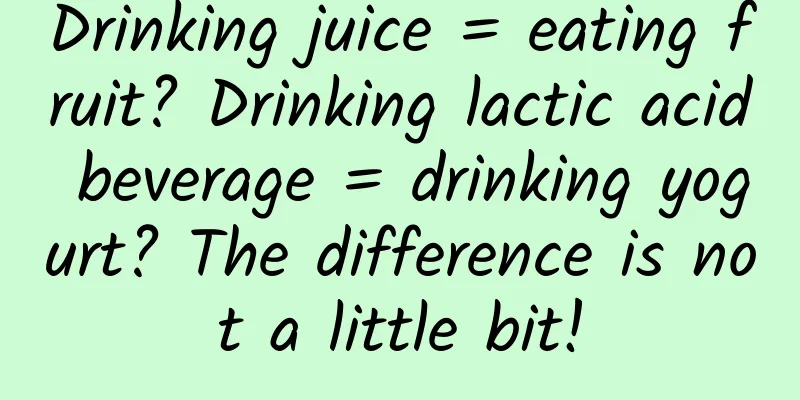How many steps are needed to make a leaf?

|
When you step on the fallen leaves on the road and hear a crunching sound under your feet, have you ever thought that these seemingly ordinary leaves have silently completed a magical mission on the branches? Through photosynthesis, leaves absorb carbon dioxide and release oxygen, maintaining the breathing and symbiosis of all life on Earth. Among the exquisite "designs" of nature, leaves are undoubtedly one of the most wonderful "factories". Can humans replicate this magical "magic" of nature? If possible, we can use this "factory" to produce clean energy, reduce carbon dioxide emissions, slow down the pace of climate change... to help mankind better cope with future energy and environmental challenges. Recently, in the laboratory of Liu Dianyi of the School of Engineering at Westlake University, an "artificial biological leaf" very similar to a natural leaf has grown. This leaf is lying quietly in a petri dish, waiting for the call of the sun. What is an artificial leaf? The concept of an artificial leaf was first conceived in the 1980s with the goal of producing hydrogen on a large scale by splitting water with light energy and producing organic matter from carbon dioxide. If you see scientists calling a tube of solution an "artificial leaf," don't be surprised, because artificial leaves initially simulate the "function" of leaves, not their "form." Why do scientists study artificial leaves? "Natural leaves have evolved over hundreds of millions of years and have an exquisite structure, but their photosynthesis efficiency is not high, only about 1%." Liu Dianyi explained. Natural leaves only absorb blue-violet light and part of near-infrared light, and the number of photons absorbed is limited, which limits their efficiency. So, imagine if scientists could optimize the design of leaves according to different needs, select suitable materials, improve their light absorption efficiency, and overcome the limitations of photosynthesis, then these artificial leaves would become efficient "photosynthesis machines" that are "emotionless"! Research on designing artificial devices to imitate the photosynthesis of natural leaves has been going on for decades. What is special about the artificial leaves reproduced by Liu Dianyi's laboratory compared with other "artificial leaves"? At first glance, you will find that it looks like a "real leaf". Looking closely at this leaf, on the surface, it is just a thin membrane, but inside it contains a complex bionic design. The core of the leaf is a "cooperative" composed of photoelectric semiconductors and special bacteria. Once exposed to sunlight, the semiconductors will capture light energy and convert it into electron movement. This energy is transmitted to the bacteria attached to the semiconductor like a "nutrient", making them "full of vitality" and starting to efficiently convert carbon dioxide into organic matter such as acetate. "This is a truly artificial biological leaf," said Liu Dianyi. It not only has the shape of a leaf, but can also absorb sunlight and convert carbon dioxide like a natural leaf, and has real vitality - just like a living "micro-factory" with "breathing" and "metabolism" functions. How many steps are needed to “ replicate ” a leaf ? How are these magical leaves made? Let’s go into Liu Dianyi’s laboratory and see how many steps are needed to replicate a leaf. Step 1: Install a "power source" on the blades In nature, the magic of leaves is that they can convert sunlight into energy through photosynthesis. The core of this process is chlorophyll . In order to make artificial leaves have the function of photosynthesis, the first challenge faced by Liu Dianyi's team in the laboratory was to find a "power source" that could simulate chlorophyll. They chose polymer semiconductor films , which can efficiently absorb light and generate electrons, and can be called "light catchers" for artificial leaves. In order to make the leaves have stronger light absorption and conversion efficiency, the team further designed a "bulk heterojunction" structure. Simply put, this structure is like an efficient "energy battery" that can separate electrons and positively charged "holes" under sunlight to avoid internal energy consumption, allowing the leaves to continue to absorb light. | Schematic diagram of the electron transfer principle of the biological artificial photosynthetic system. Ultimately, the light energy absorbed by this semiconductor film will be converted into "nutrients" for bacteria, providing a continuous source of power for the leaves. "In fact, the concept of bionic photosynthesis is not new," Liu Dianyi said. "Decades ago, scientists envisioned using inorganic materials to complete photosynthesis, decomposing water to produce hydrogen and oxygen. However, they often lack the vitality of real organisms and only have partial photosynthesis functions." Semiconductor materials are used instead of chlorophyll to capture light energy, and bacteria are used as "workers" to complete the "work". This unique combination makes the artificial leaf not only a conversion device, but also a living "factory". Step 2: Make the leaves come alive After obtaining the "power source" of photosynthesis, the next goal is to give the leaves real "vitality" - allowing the leaves to not only absorb light, but also "come alive". In the "heart" of the leaf, the key component is a thin and flexible film, which is home to many bacteria with carbon dioxide conversion functions. These "micro workers" do not exist naturally in leaves, but are carefully selected and specially designed "foreign cell workers". Semiconductor materials are responsible for absorbing sunlight and transferring light energy to bacteria, thereby greatly improving the efficiency of carbon dioxide conversion. "In this process, bacteria act like 'catalysts', helping the leaves to continuously convert carbon dioxide," Liu Dianyi explained vividly. To make these bacteria "live" on the leaves, the team conducted repeated experiments and finally found a suitable attachment method to make the bacteria "settle down" on the semiconductor film. After obtaining the energy transmitted by the semiconductor, the bacteria continuously "swallowed" carbon dioxide and converted it into useful organic matter. From then on, the "vitality" of the leaves began to emerge: this multifunctional "micro-factory" can not only breathe freely, but also continue to "reproduce and spread". Step 3: Give the leaves a “shape” With the power source and vitality, the next big challenge is to give the artificial blade a "shape". In previous studies, many artificial photosynthesis systems were only in solution state, lacking the solid form of leaves. This time, Liu Dianyi's team set a clear goal from the beginning: since it is called an "artificial leaf", this leaf must not only have functions, but also have the shape and structure of a leaf. To solve this problem, Liu Dianyi's team used a lightweight flexible substrate , using this flexible, lightweight base material to lay a polymer semiconductor film on it, so that the leaves can float on the water like aquatic plant leaves. This design not only allows the leaves to absorb carbon dioxide under sunlight, but can also be used on a large scale in the future as a green carbon sink. In addition, the team also designed a "quasi-solid" artificial leaf, which has a higher structural stability by adding materials such as agar. In this way, the leaf can not only work on the water surface, but also function stably in the land environment. Through this step, the artificial leaf not only has functions, but also has a morphology similar to that of natural leaves, becoming a complete system. | Schematic diagram of an artificial leaf that is alive and has the same form and function as a natural leaf Step 4: Realize the "Blade Cycle" With a light-absorbing "power source", viable bacteria, and a stable shape, the artificial leaf has taken shape. What Liu Dianyi's team hopes for is not just a device that can perform photosynthesis, but an "artificial leaf" that can truly participate in the natural cycle. Through experiments, the team found that the acetate produced by this leaf can not only be used as industrial raw materials, but can also be further used to cultivate yeast and provide nutrients for food production. This circular design makes the artificial leaf no longer just a laboratory product, but a "new species" that may be integrated into the ecosystem. Through this research, artificial leaves were able to achieve the complete conversion from carbon to food in the laboratory, and initially possessed the functions of an artificial ecosystem. The acetate produced is further used to cultivate yeast for food production How many more steps will artificial leaves take in the future? From material design to giving "life", from functional realization to ecological cycle, making a leaf seems to only require "four simple steps", but it took Liu Dianyi's team four years. Because this process is full of interdisciplinary challenges, involving multiple fields such as biology, chemistry, materials science, and engineering. Looking through Liu Dianyi's resume on the official website of Westlake University, he has been engaged in research in the field of optoelectronic materials and devices for a long time. Previously, his knowledge of biology was very limited. Thanks to the strong interdisciplinary atmosphere of Westlake University, in addition to reading relevant literature, the research team can also communicate and learn from each other with the laboratories of the School of Life Sciences at any time. Finally, from a completely unfamiliar field to solving the problem step by step, materials science, bioengineering, physical chemistry - these fields are cleverly intertwined on this leaf, making the artificial leaf from conception to reality. In the future, scientists from different fields will be able to take more steps on this basis and push this leaf towards broader application areas. Just imagine, perhaps in the near future, these "breathing" leaves will float on the water and cover the top floors of buildings, silently absorbing carbon dioxide, generating oxygen and organic matter, and truly becoming small "green factories." If we imagine the more distant future: when humans head towards planets such as Mars, perhaps these artificial leaves will become their "travel companions", using the abundant carbon dioxide on alien planets to bring us oxygen and food, allowing life to continue in alien environments... One, two, three or four pieces. We hope that these artificial biological leaves can be "released" from the laboratory, float into the wider world, and bring more possibilities. (Source: Westlake University) |
>>: The "slowest bird" may not fly first, but it may have the longest wings
Recommend
[Practical Information] Information flow advertising landing page treasured by people from all industries!
We all know that the task of most landing pages i...
Well-known martial arts actor died of esophageal cancer. Is hoarseness a sign of esophageal cancer? The truth is...
Recently, the news that "Martial arts film s...
How much of your knowledge of psychology is reliable?
Don't trust any single research result at fac...
The habit of paying for genuine software is becoming more common: the era of iOS jailbreaking is over
Nowadays, people are getting more and more accust...
iOS 11 updates that app developers must know
Almost a quarter has passed since WWDC 2017. With...
Looking at the construction of marketing scenarios from Pinduoduo's "Duoduo Orchard"
At a time when fruit prices are getting higher an...
Snapdragon 835 Win10 computer configuration/price details revealed: HP and Dell have started production
During MWC, Qualcomm shared more news about the Sn...
[Creative Cultivation Program] Why does the promised rainstorm never come?
Author: Wang Zifeng Reviewer: Wang Jinhu, Associa...
Content, community, and brand are three in one, curing traffic anxiety
Starting from the content mechanism of WeChat, th...
The strange fish in "Avatar 2" have prototypes? If you don't read this article, it's a waste of time to watch the movie!
Calendar Girl promises that this article does not...
30+ short and professional tips on how to become a better Android developer
[[201531]] It is easy to become an Android develo...
SAIC-GM has no way to save itself by cutting production and laying off employees. It is better to follow Volkswagen's example and rely on domestic brands as soon as possible.
Toyota, Honda, and Nissan all fell in price. Japa...
Nissan Leaf's autopilot turned off during demonstration, posing safety issues
Last week in Yokohama, near Tokyo, Nissan Motor C...
Rocky Mountain Institute: China's chemical industry's zero-carbon path under the goal of carbon neutrality
The chemical industry is broadly defined as the p...
How do Pinduoduo, Lian Coffee and Xin Shixiang carry out fission marketing?
Attraction is the "bait for entry", com...









